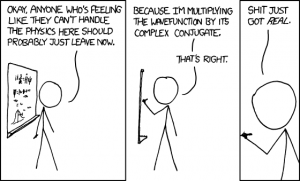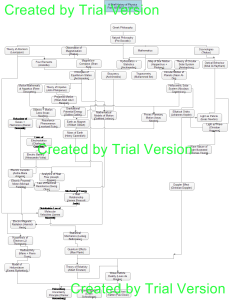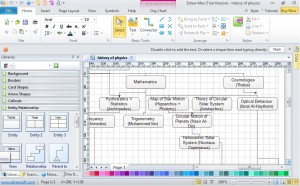Bootcamp – The History of Physics
The initial impetus was to ‘tree’ the history of Physics but it soon morphed into an analysis of editorial practices and an evaluation of historical importance. To include all scientific discoveries in the field of physics as well as the implicit connections is far too vast a project therefore I engaged only with what is most commonly accepted as valued discoveries/theories. But what is value in the context of a tree? How can we assess the usefulness of a tree and the information it displays?
History of Physics PDF (a better version)
One of the inevitable failures of this experiment was consolidating and ranking information, something which is addressed (more subliminally than formally) in Franco Moretti’s Graphs, Maps, Trees. In reference to his detective novel project, the further Moretti examined the archive, the more complex “became the genre’s morphospace” (50); the same could be observed within the history of Physics. Hyperlinks on Physics’ Wikipedia pages lead to more detailed accounts and developments of theories, textbooks include sources from other publications that provide a more comprehensive archive of achievements. Trees articulate difference (Moretti 52), as well as articulating the editorial presence, the authority through which the information is filtered and possibly sourced. Trees articulate space.
“Divergence prepares the ground for convergence” (Moretti 55), a statement applicable to the history of Physics. Theories in Physics diverge into four branches early in history, however by the twentieth century they begin to intermingle, leading to a more complex model of the universe. It is the motivations and context for these convergences/divergences which provide a commentary on social forms. Does Physics follow this pattern because publication is more easily disseminated due to increases in printing capacities? Or because transportation between academic sites is more accessible? Or because after hundreds of years new ideas are harder to invent? The tree does represent possible answers yet due to the editorial constraints of tree imposed by time, computer screen size, digital programs and other factors it also does not confirm the validity of arguments. By excluding information as is required by the visualization process of a tree, it cannot fully be contextualized. What is excluded becomes a determining factor in assessing the efficacy of the tree. In this tree statements about increasing globalization, movement of ideas, notions of scholarship, capitalism, technological development, social recognition of “sciences,” and decreases in religious authority all contribute to the evolution of theories and theorists but are not completely visualized.
Contextualization then is extracted from the tree’s evolution; when examining a linguistic tree Moretti explains that it “is a way of sketching how far a certain language has moved from another one, or from their common point of origin” (46). But isn’t origin something we, as a class, have been eschewing? Foucauldian theory focuses on the statements, which Moretti does to some extent, but the tree as a model implicitly argues for an origin, for a transcendental signifier in order to calibrate our own position. I couldn’t point to an exact moment, an exact philosopher who began classical Physics, even textbooks claim dissimilar sources, therefore I began with a generalized movement. This decision also aligned with my desire to subvert a singular narrative, to represent the multiplicity of origin, i.e. closer to Foucault’s discursive statements and farther from a lineated approach. Origin is also reinforced through tree softwareI used several applications: Edraw Max, yEd graph Editor, TreeForm Syntax and Microsoft Word’s tree function. All of these use templates with an origin point, there was only one program that permitted multiple origin points. Therefore software influences certain modes of approaching problems and perhaps reiterates Western notions of thought.
Furthermore its constraining nature is recognized in my inability to rid the “trial version” print that appears over top of my trees. The software that was easiest and best suited to my tree was not free restricting audience and authorial presence.
Moretti adapts “tree” methodology for visualizing “the interplay between history and form” (43); the history of Physics tree attempts a similar feat, however it does not focus on form as much as perpetuation of thought. In the tree the lines of connection demonstrate one of two things: a direct reference in the scholarly papers between theories, or an irrefutable claim between the two, i.e. a causal relationship. Trees, in historical displays, illustrate causality, an evolution rather than a connection, there is no two way movement, the direction is singular. I wonder if this is really the way Physics developed or if has a more circular/oscillating form which our Western traditions deny visualizations of.
————————————————————————————
Works Cited
Giancoli, Douglas. Physics for Scientists and Engineers 3rd Edition. New Jersey: Prentice Hall Publishing, 2000. Print.
Milhorn, Howard. The History of Physics. USA: Virtualbookworm.com Publishing, 2008. Print.
Moretti, Franco. “GRAPHS, MAPS, TREES: Abstract Models for Literary History – 3.” New Left Review 28 (Jul-Aug 2004): 43-63. Print.
“The History of Physics.” Wikipedia. Wikipedia, 2 Nov. 2013. Web. 4 Nov. 2013.



